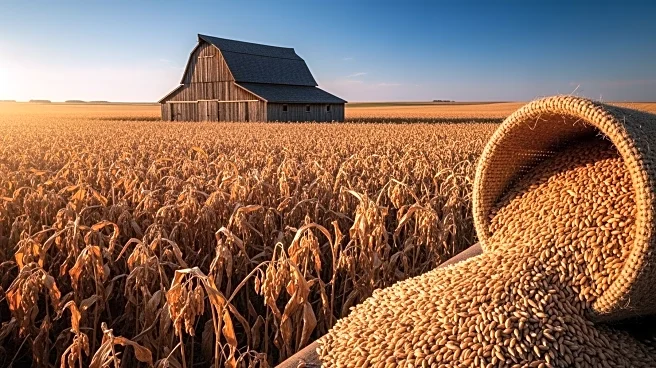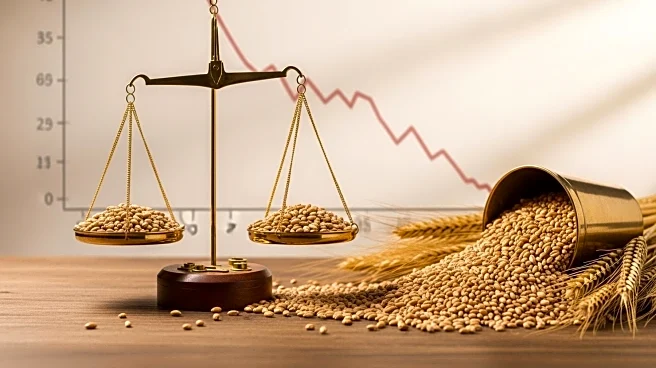What's Happening?
The U.S. agricultural sector is facing significant financial challenges, with farmers experiencing losses on key crops such as corn and soybeans. Currently, corn is selling for $4.81 per bushel, while the cost of production is $5.87, resulting in a loss of $1.06 per bushel. Similarly, soybean farmers are losing $1.78 per bushel at current market prices. This financial strain has led to a projected $24.3 billion loss for American corn and soybean growers this year. The situation is exacerbated by Brazil's dominance in the global market, where it produces corn and soybeans 30% cheaper than the U.S. The decline in net farm income, which fell by $55 billion between 2022 and 2024, is the steepest in history, raising concerns about the sustainability of the U.S. agricultural industry.
Why It's Important?
The financial difficulties faced by U.S. farmers have broader implications for rural economies and the national economy. Agriculture is a cornerstone of rural communities, supporting small-town businesses, schools, and local economies. The potential collapse of farms could lead to widespread economic downturns in these areas. Additionally, the U.S. risks losing its competitive edge in the global agricultural market to countries like Brazil. However, there are opportunities for recovery through the development of new markets, such as aviation fuel derived from ethanol. The 45Z clean fuel production credit could incentivize innovation and investment in biofuels, potentially unlocking a $350 billion market and supporting domestic oil recovery. This could provide a much-needed boost to the agricultural sector and rural economies.
What's Next?
To address these challenges, there is a need for policy interventions that remove barriers to market development and support the agricultural sector. The implementation of the 45Z clean fuel production credit could play a crucial role in revitalizing the industry by encouraging sustainable practices and opening new markets. Stakeholders, including policymakers and industry leaders, must collaborate to ensure that farmers receive a fair opportunity to compete globally. The focus should be on creating a level playing field that allows U.S. agriculture to thrive and continue its role in feeding the world and supporting rural economies.
Beyond the Headlines
The current agricultural crisis highlights the need for a strategic approach to sustainable farming and energy production. Embracing biofuels and other innovative practices not only supports farmers but also contributes to environmental goals. The intersection of agriculture and energy policy presents an opportunity to address both economic and environmental challenges, fostering a more resilient and sustainable future for rural America.












